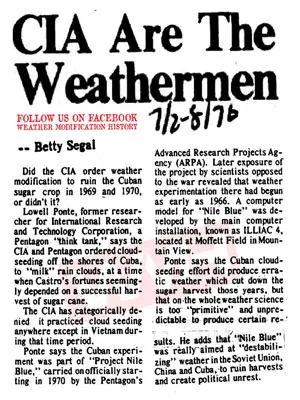
On October 19th, 2013 and May 14th, 2013 Duke Energy reported a “leak greater than 100 gallons containing tritium has the potential to reach groundwater. The source has been identified. Actions to isolate this source are being initiated.” The source of the leak was not disclosed to the public.
On May 15, 2013, Duke Energy reported a leak of of radioactive Tritium at the Catawba Nuclear Station on Lake Wylie. The available information raises more questions than answers.It is important to note that Duke Energy is reporting that more than 100 gallons of water contaminated with readioactive tritium was released. More than 100 gallons could be 101 gallons or one million gallons. At this point there are more questions than answers.
Some questions include:
source: Catawba RiverKeeper
- How much was released? Over what period of time? What was the concentration of tritium in the water? What were the radiation levels?
- Previously the groundwater at the site had tritium contamination. What is the extent of tritium and tritiated water from this and other releases?
- Why was tritium contaminated water in the turbine building? Isn't the water in the turbine steam supposed to be free of radioactive materials?
- Is the groundwater being remediated for tritium contamination or simply monitored? What is the extent of contamination
- Is duke checking offsite wells?
- Are Rock Hill and Ft. Mill, which have water intakes near the Catawba Nuclear Station, checking water from nearby intakes for tritium or tritiated water? (Rock Hill checked in past and found levels below regulatory standard but it is unclear if they have tested recently.)
On October 8, 2007, plant staff at the Catawba Nuclear Station received sample results which indicated the presence of detectable concentrations of tritium (hydrogen-3) in liquids collected from a ground water monitoring well located within the owner controlled area (OCA). The monitoring well is located approximately one half mile inside the property boundary of the facility. The measured level of activity in the sample obtained from this monitoring well was approximately 42,000 pCi/L from a depth of 50 feet. Additional water samples collected from other monitoring well locations onsite within the OCA also had measurable concentrations of tritium with a maximum level of approximately 4,000 pCi/L. This was the initial sampling of 30 new ground water monitoring wells which were recently installed at Catawba Nuclear Station in support of the Nuclear Energy Institute (NEI) ground water initiative. source: pbadupws.nrc.gov
"We don't know the source; that is part of the investigation," Valeria Patterson, Duke Energy spokesperson. source: heraldonline.comSouth Carolina DHEC tested 27 wells (2 on-site, 1 public, and 24 private off-site wells) finding all were below safe drinking levels, however two recent leaks at the Catawba Nuclear Station are raising concerns that local water wells may be tainted.

This may seem like a fairly innocuous story until you realize the scope of leaks like these. David Lochbaum from the Union of Concerned Scientists compiled a list of leaks that you didn’t hear about:
“For unannounced and unexplained reasons, the NRC stopped enforcing regulatory requirements for releases of radioactively contaminated liquid after the massive Braidwood spills in 2005. The NRC has imposed no sanctions in response to the 27 accidental releases that have occurred over the past four years:
- Pilgrim plant, Massachusetts, July 2010: Workers detected tritium concentrations of over 11,000 picocuries per liter in a monitoring well.
- LaSalle plant, Illinois, July 2010: Workers detected tritium concentrations of up to 700,000 picocuries per liter on the ground around the condensate storage tank.
- Browns Ferry plant, Alabama, April 2010: Radioactively containment water overflowed condensate storage tank #5 through an open valve.
- Salem plant, New Jersey, April 2010: Workers detected tritium concentrations exceeding 1,000,000 picocuries per liter in the north storm drain system.
- Vermont Yankee plant, Vermont, January 2010: The company informed the NRC about tritium concentrations of up to 2,500,000 picocuries per liter in monitoring wells; workers later discovered holes in two underground pipes.
- Brunswick plant, North Carolina, January 2010: Workers discovered radioactively contaminated water leaking into the ground from an outdoor pipe.
- Shearon Harris plant, North Carolina, January 2010: Workers discovered radioactively contaminated water leaking into the ground from an 8-inch diameter pipe.
- Monticello plant, Minnesota, September 2009: Workers detected tritium concentrations of over 21,000 picocuries per liter in a monitoring well.
- Oyster Creek plant, New Jersey, August 2009: Workers discovered radioactively contaminated water leaking into the ground from where a condensate transfer pipe passed through the turbine building wall.
- Peach Bottom plant, Pennsylvania, July 2009: Workers detected tritium concentrations exceeding 127,000 picocuries per liter in soil sampled near the Unit 3 turbine building.
- Dresden plant, Illinois, June 2009: Workers detected tritium concentrations exceeded 3,000,000 picocuries per liter in a monitoring well near the condensate storage tank, and tritium concentrations of 500,000 picocuries per liter in a nearby storm drain line.
- Oyster Creek plant, New Jersey, April 2009: Workers detected tritium concentrations of over 100,000 picocuries per liter in water collecting in an underground cable vault; workers later identified the source of this contaminated water to be leaks in two separate buried pipes to and from the condensate storage tank.
- Shearon Harris plant, North Carolina, April 2009: An independent consultant concluded that radioactively contaminated water was leaking from the underground pipe that ran from the cooling tower basin to Lake Harris.
- Davis-Besse plant, Ohio, October 2008: Workers detected tritium concentrations exceeding 37,000 picocuries per liter in soil excavated during a search for a leaking fire protection system pipe.
- Brunswick plant, North Carolina, March 2008: Workers detected tritium in 14 of 15 monitoring wells around the storm drain storage pond; samples from some monitoring wells had tritium concentrations exceeding 30,000 picocuries per liter.
- McGuire plant, North Carolina, February 2008: Approximately 100,000 gallons of radioactively contaminated water leaked into the groundwater from a holdup pond.
- River Bend plant, Louisiana, January 2008: Workers detected tritium concentrations of over 129,000 picocuries per liter in water leaking from a cooling tower pipe into a nearby creek that empties into the Mississippi River.
- Browns Ferry plant, Alabama, January 2008: Radioactively contaminated water overfilled a condensate storage tank and permeated through a concrete pipe tunnel into the ground.
- Palisades plant, Michigan, December 2007: Workers detected tritium concentrations of over 20,000 picocuries per liter in a monitoring well.
- Surry plant, Virginia, October 2007: Workers detected tritium concentrations of over 31,000 picocuries per liter in water leaking from an underground storm drain.
- Catawba plant, South Carolina, October 2007: Workers detected tritium concentrations of over 42,000 picocuries per liter in monitoring wells.
- Brunswick plant, North Carolina, June 2007: Workers detected tritium concentrations of 30,000 picocuries per liter in monitoring wells.
- Salem plant, New Jersey, May 2007: Approximately 20,000 gallons of radioactively contaminated water spilled onto the ground.
- Fort Calhoun plant, Nebraska, May 2007: Workers detected tritium concentrations of up to 173,000 picocuries per liter in water leaking into the basement through an exterior wall.
- Brunswick plant, North Carolina, May 2007: Workers detected tritium in water samples drained from electrical manholes on the plant grounds.
- Kewaunne plant, Wisconsin, August 2006: Workers detected tritium in groundwater sampled from beneath the auxiliary and turbine buildings.
But York County Emergency Management Director Cotton Howell said there’s really no reason to be alarmed after an overnight leak of a water line at the Catawba Nuclear Station.We will continue to monitor the situation at Catawba and update you when further information is available.Howell said plants like Catawba are very complex and contain hundreds of miles of pipe.
“It stands to reason that occasionally they’re going to have one of those pipes leak and if it’s going to leak, let it leak in something going to the waste water plant…and let it leak well within the confines of the plant,” Howell said.
source: wrhi.com
References:
- Radiation Leak at Catawba Nuclear Station: http://www.catawbariverkeeper.org/issues/nuclear-powerplants/radiation-leak-at-catawba-nuclear-station
- US NRC groundwater contamination communications page: http://www.nrc.gov/reactors/operating/ops-experience/tritium/communications.html
- Duke Energy reports tritium leak at Catawba Nuclear Station: http://www.heraldonline.com/2007/10/11/140669/duke-energy-reports-tritium-leak.html
- PRELIMINARY NOTIFICATION OF EVENT OR UNUSUAL OCCURRENCE PNO-II-07-012: http://pbadupws.nrc.gov/docs/ML0728/ML072850013.pdf
- NRC reading room: http://pbadupws.nrc.gov/docs/ML0730/ML073050082.pdf
- PRELIMINARY NOTIFICATION OF EVENT OR UNUSUAL OCCURRENCE PNO-II-07-012A: http://pbadupws.nrc.gov/docs/ML0731/ML073111396.pdf
- SC DHEC Catawba Nuclear Station - Bethel Community Well Water Sampling for Tritium (home): http://www.scdhec.gov/environment/catawba_nuclear/
- Bethel Community Well Water Sampling for Tritium (results): http://www.scdhec.gov/environment/catawba_nuclear/Catawba_Well_Sampling_Fact_Sheet.pdf
- Residential Well Sampling for Tritium Adjacent to Catawba Nuclear Power Plant (map): http://www.scdhec.gov/environment/catawba_nuclear/Catawba_Public_Map.pdf
- Duke Energy's Catawba Nuclear Station page: http://www.duke-energy.com/power-plants/nuclear/catawba.asp
- Emergency Manager: No reason for concern after radioactive leak at nuclear station: http://www.wbtv.com/story/22258599/radioactive-leak-reported-at-catawba-nuclear-station
- York County official: Tritium leak at Catawba plant poses no health risk: http://www.wrhi.com/2013/05/york-county-official-no-reason-for-alarm-after-tritium-leak-at-catawba-plant-79051
- Regulatory Roulette: The NRC’s Inconsistent Oversight of Radioactive Releases from Nuclear Power Plants: http://www.ucsusa.org/assets/documents/nuclear_power/nuclear-power-radioactive-releases.pdf




























